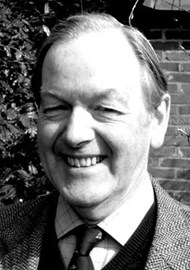Professor Wolfgang Pirsig is a key figure in the field of ENT history and is known for his fascinating discoveries of ENT features in art and historical objects. He kindly agreed to be interviewed for this special history focus by his good friend and the Editor of this edition, Mr Neil Weir.
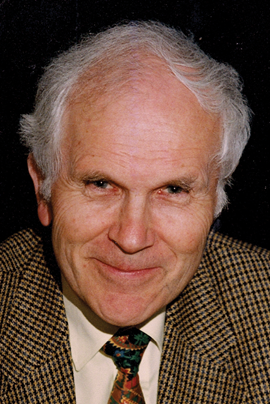
Professor Wolfgang Pirsig.
Wolfgang, we have been friends for over 40 years please give our readers a short summary of your life.
As the second child among three brothers and three sisters, I was born in 1937 in Neustrelitz, Germany. In 1967, I married Dr med Hildburg Hoffmann, also an ORL specialist. We have a son and a daughter. I studied medicine and philosophy at the Universities of Göttingen and Hamburg and qualified Dr med in 1963. At the Hospital for Otorhinolaryngology of the University of Hamburg, I investigated the physiology and anatomy of auditory pathways of the guinea pig for two years and worked as a resident for the following three years. My thesis about anatomy and physiology of auditory cells in the cochlear nucleus was defended in 1971 and in 1976 I was appointed Extraordinary Professor for ORL (University of Hamburg). During my time as staff member of the ORL Hospital (1970 to 1979) I studied clinical and histological findings of the growing human nose. In 1979 I moved to become University Professor of Otorhinolaryngology at the University of Ulm. Here I focused on clinical problems in rhinology, paediatric otorhinolaryngology and sleep medicine. As Head of the Section of Rhinology and Rhonchopathy (1989 to 2002) I continued to have an insight into the pathophysiology of these three sub specialities.
History of medicine, especially of otorhinolaryngology, has been my interest since my time as a student. In particular, I wanted to find out how medical topics are mirrored in culture.
You are recognised as one of the major drivers in the field of ORL history. Would you tell me who or what started you off in this interest?
My teacher in ancient Greek at school inspired the interest for ancient cultures and advised me to study philosophy parallel to medicine. As a young ORL doctor I often accompanied teachers from advanced secondary schools on their preparation travels through western and southern Europe. This made me become a museum freak. No wonder that my first publication in 1972 was on noses in Roman portrait sculptures between 100 BCE and 300 AD, after a visit to the Naples Archaeological National Museum. During my night-duties as a staff member at the ORL Hospital of Hamburg University with help from a student, we restored what was the largest temporal bone collection of its time in the world, which had been left by Karl Wittmaack. There was also a big library with many old ORL books. Both these historical heritages inspired me to found a Museum for the History of ORL in our hospital in 1975. It remained the only specialty history of medicine museum in Hamburg until the Museum of History of Medicine of the University of Hamburg was opened in 2010.
“I have always been interested in how the topics of ORL are mirrored in our culture since the Ice Age.”
Your fascination in finding ORL history features in all periods of art is well known. Please tell us about some of your most interesting finds.
When you go through my list of publications you will see that I like working in a team. Yes, some details I have first noticed whilst strolling through museums and libraries, but integrating new finds into publications gives me much more pleasure when doing it in a group. The mutual exchange between younger and more senior group members still fascinates me. Here are five examples of ‘firsts’ from my and our group’s finds:
• A 13.5 cm high earthenware figurine of a woman from the 7th to 6th Century BCE (Heraklion Museum) which was excavated in Gortys, South Crete and exhibits a facial palsy due to a stroke which also affected the left arm.
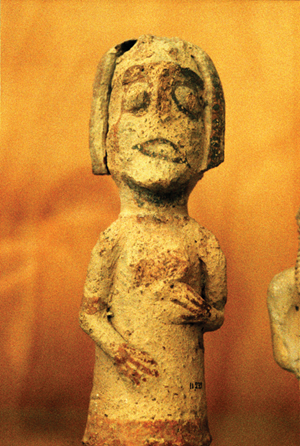
• A small mirror, once used to test the last breath of a dying woman, which I found on the fresco of a tomb in Paestum dated about 320 BCE. An early nasal function test!
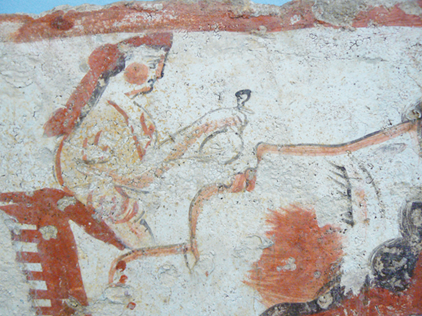
• The earliest exact depiction of the foramen Huschke in the external auditory canal of a skull in the oil painting Saint Jerome in his study by the Flemish artist Marinus Claeszon van Reymerswaele (Kunsthistorisches Museum, Vienna). He depicted the foramen four times between 1521 and 1541, which means a hundred years before the physician Riolan the Younger described it. We also found several foramina Huschke in temporal bones from the Early Bronze Age (Naturhistorisches Museum, Vienna) excavated in the cemetery of Franzhausen II, a village south of Krems in Lower Austria, dating back more than 2000 years BCE.
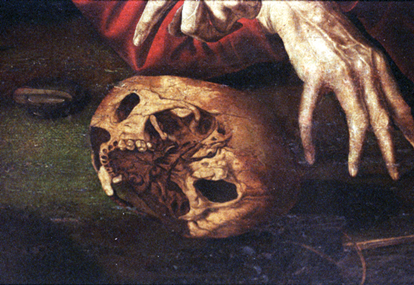
• In a pre-Columbian mummy head and atlas and epistropheus from Cahuachi in southern Peru (between120 to 750 AD), I found a bulging dry brownish mass that reduced the lumen of the upper spinal canal together with the dislocated C1/C2 transition (Institute of Anthropology, Munich). We identified a ‘fresh’ epidural haematoma in the upper cervical spinal canal extending into the skull cavity, obviously due to rupture of the left vertebral artery at its transition between atlas and skullbase. Dry blood more than 1200 years old!
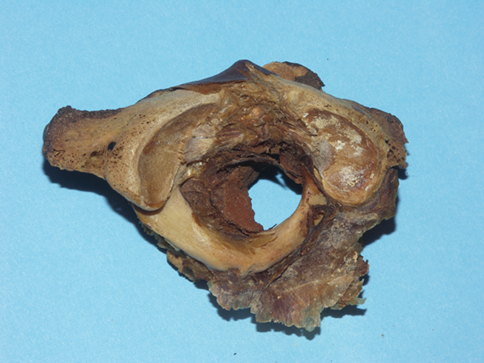
• In a sixth millennium BCE clay figurine of a ‘Mother-Goddess’, with a child just being born and resting between her legs, I investigated the baby’s nose. When I visited the Museum of Anatolian Civilization in Ankara again in 2009 I noticed that the nose looked slightly damaged. Comparing the nose on the photograph from 1968 taken by the excavator it was clear that the contour of the nasal bridge had suffered a bit in the meantime. A new-born’s nose hidden below the ground for thousands of years had become traumatized after ‘breathing’ during 41 years in a National museum!
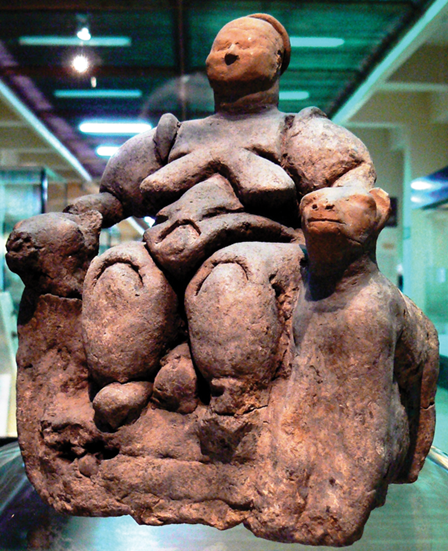
Tell me more about the new Museum of History of Medicine in Hamburg. How did you get involved in this?
In 2010, I was asked by the foundation group to participate in building up this new museum at the University of Hamburg by including the historical objects I had collected since 1975. Thus, my wife and I became honorary co-workers in the new institution. In the meantime, we have been helping to prepare other historical exhibitions including ORL topics.
Why do you feel that the knowledge of the history of ORL is so important and what advice would you give to young ORL surgeons?
ORL developed as a speciality from surgery and internal medicine in the last quarter of the 19th Century. It is fascinating to follow these early traces and the permanent changes in the pathophysiological concepts, diagnostics and treatments in this field until now. But apart from these purely medical aspects, I have always been interested in how the topics of ORL are mirrored in our culture since the Ice Age, especially in figurative arts, painting and archaeology, where we have access to skeletons and mummies. Start with detecting the history of your own hospital: the foundation, medical personnel, their specialties, publications, old instruments and apparatus, medical charts, teaching material etc. Read old literature, but rely only on original sources. Find like-minded colleagues from other specialties. I have worked together with colleagues interested in history from the fields of archaeology, radiology, pathology, forensic medicine and with museum curators. I still retain some of these links. Visit conferences about the history of medicine and try to become a member of a working group in this field.
Thank you Wolfgang.
Interviewed by Neil Weir.
Declaration of Competing Interests: None declared.

